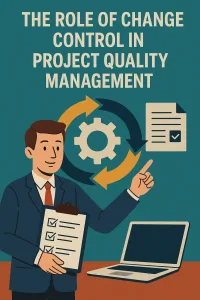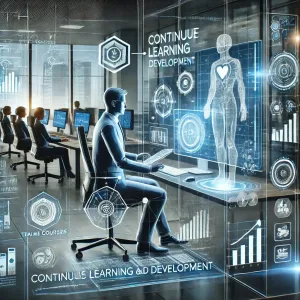Introduction to BIM and Remote Project Management
Building Information Modeling (BIM) is a transformative approach in the field of project management, particularly within the architecture, engineering, and construction (AEC) industries. BIM involves the generation and management of digital representations of physical and functional characteristics of places. This process not only enhances visualization but also facilitates better decision-making throughout the project lifecycle. The significance of BIM in project management lies in its ability to improve collaboration among stakeholders, streamline workflows, and reduce errors and rework, ultimately leading to more efficient project delivery.
The rise of remote project management has been notably accelerated by the COVID-19 pandemic, which forced many organizations to adapt to new working environments. As teams transitioned to remote work, the need for effective communication and collaboration tools became paramount. Remote project management allows teams to operate from various locations, leveraging technology to maintain productivity and engagement. However, this shift also presents unique challenges, such as maintaining team cohesion, ensuring clear communication, and managing project timelines effectively.
Integrating BIM into remote project management is crucial for enhancing efficiency and collaboration among dispersed teams. BIM provides a centralized platform where all project stakeholders can access real-time data, share updates, and visualize project progress. This integration not only mitigates the risks associated with remote work but also fosters a collaborative environment where team members can contribute effectively, regardless of their physical location. By utilizing BIM, remote project managers can ensure that projects remain on track, stakeholders stay informed, and the overall quality of work is maintained, even in a virtual setting.
Understanding the fundamentals of BIM and recognizing the challenges of remote project management are essential for project managers and team leaders aiming for success in today’s dynamic work environment. Embracing BIM as a core component of remote project management strategies can lead to improved outcomes and a more cohesive team experience.
Understanding the Challenges of Remote BIM Project Management
Managing Building Information Modeling (BIM) projects remotely presents a unique set of challenges that project managers and team leaders must navigate to ensure successful outcomes. Here are some of the key challenges faced in this context:
- Communication Barriers Among Distributed Teams: Effective communication is crucial in any project management scenario, but it becomes even more complex when teams are distributed across different locations. Remote work can lead to misunderstandings, delays in information sharing, and a lack of cohesion among team members. The absence of face-to-face interactions can hinder relationship building and trust, which are essential for collaborative efforts in BIM projects.
- Technical Challenges Related to Software and Hardware Requirements: BIM projects often rely on sophisticated software tools that require specific hardware capabilities. Remote teams may face difficulties in accessing the necessary technology, leading to inconsistencies in project execution. Additionally, ensuring that all team members are proficient in using the required software can be a challenge, particularly when onboarding new team members remotely.
- Data Management Issues, Including Version Control and Accessibility: BIM projects generate vast amounts of data that need to be managed effectively. Remote project managers must ensure that all team members have access to the most current versions of project files. Version control becomes critical, as multiple team members may be working on different aspects of the project simultaneously. Without a robust system in place, the risk of errors and data loss increases significantly.
- Maintaining Quality Control and Adherence to Standards in a Remote Setting: Ensuring that all project deliverables meet quality standards is a fundamental aspect of project management. In a remote environment, maintaining oversight can be challenging. Project managers must implement rigorous quality control processes and ensure that all team members are aligned with the project’s standards and protocols, which can be more difficult without direct supervision.
- Time Zone Differences and Their Impact on Collaboration: When team members are spread across various time zones, scheduling meetings and collaborative sessions can become problematic. This can lead to delays in decision-making and project progress, as team members may not be available simultaneously. Project managers need to develop strategies to accommodate these differences, such as flexible working hours or asynchronous communication methods, to keep the project on track.
By understanding these challenges, remote project managers can develop targeted strategies to mitigate risks and enhance collaboration, ultimately leading to more successful BIM project outcomes.
Effective Communication Strategies for Remote BIM Teams
Effective communication is paramount, especially when teams are working remotely. The challenges of distance can hinder collaboration, but with the right strategies, remote BIM teams can thrive. Here are some key points to enhance communication among remote BIM project teams:
- Utilize Project Management and Collaboration Tools: Leveraging specialized tools such as BIM 360, Slack, and Microsoft Teams can significantly streamline communication. These platforms facilitate real-time collaboration, allowing team members to share updates, documents, and feedback seamlessly. BIM 360, in particular, is designed for the construction industry, providing a centralized hub for project data and communication, which is essential for remote teams to stay aligned and informed.
- Establish Regular Check-Ins and Updates: Scheduling consistent check-ins—whether daily, weekly, or bi-weekly—ensures that all team members are on the same page. These meetings can serve as a platform for discussing progress, addressing challenges, and aligning on next steps. Regular updates help maintain momentum and accountability, which are crucial in a remote setting where team members may feel isolated.
- Encourage Open Communication Channels for Feedback and Queries: Fostering an environment where team members feel comfortable voicing their concerns and asking questions is vital. This can be achieved by creating dedicated channels for feedback within collaboration tools. Encouraging team members to share their thoughts openly not only enhances problem-solving but also builds trust and camaraderie among remote workers.
- Use Video Conferencing for More Personal Interactions and Complex Discussions: While text-based communication is efficient, video conferencing can bridge the gap created by physical distance. Tools like Zoom or Microsoft Teams allow for face-to-face interactions, which can be particularly beneficial for complex discussions that require nuanced understanding. Video calls can help convey tone and body language, making it easier to build relationships and resolve misunderstandings.
By implementing these strategies, remote BIM project teams can enhance their communication, leading to improved collaboration and project outcomes. Effective communication is not just about exchanging information; it’s about building a cohesive team that can navigate the challenges of remote work together.
Leveraging Technology for Successful Remote BIM Management
Building Information Modeling (BIM) presents unique challenges and opportunities. As project managers and team leaders navigate the complexities of managing BIM projects from a distance, leveraging technology becomes essential for ensuring success. Here are key strategies that can facilitate effective remote BIM management:
1. Cloud-Based BIM Tools for Real-Time Collaboration
Cloud-based BIM tools are at the forefront of enabling seamless collaboration among remote teams. These platforms allow multiple stakeholders to access, edit, and share project files in real-time, regardless of their physical location. Key benefits include:
- Accessibility: Team members can work from anywhere, ensuring that geographical barriers do not hinder project progress.
- Instant Updates: Changes made by one team member are immediately visible to others, reducing the risk of miscommunication and errors.
- Centralized Data: All project information is stored in a single location, making it easier to manage and retrieve data as needed.
Popular cloud-based BIM solutions include Autodesk BIM 360, Trimble Connect, and Bentley ProjectWise, which offer various features tailored to enhance collaboration and efficiency.
2. Implementing Version Control Systems
Managing changes and updates in a BIM project can be challenging, especially when multiple team members are involved. Implementing a robust version control system is crucial for:
- Tracking Changes: Version control allows project managers to monitor modifications made to the BIM model, ensuring that everyone is working with the most current information.
- Reverting to Previous Versions: In case of errors or miscommunications, teams can easily revert to earlier versions of the project, minimizing disruptions.
- Audit Trails: Maintaining a record of changes helps in accountability and provides insights into the decision-making process throughout the project lifecycle.
Tools like Git, Subversion, or specialized BIM version control systems can be integrated into the workflow to streamline this process.
3. Utilizing Virtual Reality (VR) and Augmented Reality (AR)
Incorporating VR and AR technologies into remote BIM management can significantly enhance project reviews and stakeholder engagement. These immersive technologies offer:
- Enhanced Visualization: VR allows team members to experience the project in a simulated environment, providing a better understanding of spatial relationships and design intent.
- Interactive Reviews: AR can overlay digital information onto the physical world, enabling real-time assessments and modifications during site visits or virtual meetings.
- Improved Communication: By visualizing complex designs, teams can communicate ideas more effectively, reducing misunderstandings and fostering collaboration.
Investing in VR and AR tools can lead to more informed decision-making and a more cohesive project vision.
4. Prioritizing Cybersecurity Measures
As remote work increases reliance on digital tools, the importance of cybersecurity cannot be overstated. Protecting sensitive project data is paramount, and project managers should consider the following measures:
- Data Encryption: Ensuring that all data transmitted over the internet is encrypted can protect against unauthorized access and data breaches.
- Access Controls: Implementing strict access controls ensures that only authorized personnel can view or edit sensitive project information.
- Regular Security Audits: Conducting periodic security assessments can help identify vulnerabilities and reinforce the overall security posture of the project.
By prioritizing cybersecurity, project managers can safeguard their projects against potential threats, ensuring that sensitive information remains protected throughout the project lifecycle.
Successfully managing BIM projects remotely requires a strategic approach that leverages technology to overcome challenges. By utilizing cloud-based tools, implementing version control systems, embracing VR and AR technologies, and prioritizing cybersecurity, remote project managers can enhance collaboration, streamline processes, and ultimately drive project success. Embracing these technological solutions will be key to thriving in a remote work environment.
Best Practices for Remote BIM Project Management
Managing Building Information Modeling (BIM) projects remotely presents unique challenges, but with the right strategies, remote project managers can ensure successful outcomes. Here are some actionable best practices that can help streamline remote BIM project management:
- Set Clear Goals and Expectations: Clearly defined objectives are crucial for remote teams. Establish specific, measurable, achievable, relevant, and time-bound (SMART) goals for each project phase. This clarity helps team members understand their roles and responsibilities, reducing ambiguity and enhancing productivity. Regularly revisit these goals to ensure alignment and adjust as necessary.
- Establish a Structured Workflow: Implement a structured workflow that outlines project tasks, timelines, and deliverables. Utilize project management tools that support BIM processes, such as Autodesk BIM 360 or Navisworks, to create a centralized platform for collaboration. This structure not only helps in tracking progress but also ensures that all team members are on the same page regarding project milestones and deadlines.
- Encourage Continuous Training and Skill Development: The rapidly evolving nature of BIM technologies necessitates ongoing training. Provide access to online courses, webinars, and workshops that focus on the latest BIM tools and methodologies. Encourage team members to pursue certifications and share their knowledge with the team. This investment in skill development not only enhances individual capabilities but also strengthens the overall project team.
- Foster a Culture of Accountability and Team Cohesion: Building a strong team culture is essential, especially when team members are physically distant. Use regular check-ins, virtual meetings, and collaborative platforms to maintain open lines of communication. Encourage team members to share their progress and challenges, fostering a sense of accountability. Celebrate achievements, both big and small, to enhance team morale and cohesion.
By implementing these best practices, remote project managers can effectively navigate the complexities of BIM project management, ensuring that their teams remain productive, engaged, and aligned towards common goals.
Conclusion and Future Trends in Remote BIM Project Management
The integration of Building Information Modeling (BIM) into remote project management has become increasingly vital. Effective strategies for managing BIM projects remotely are essential for ensuring collaboration, efficiency, and successful project outcomes. Here, we recap the importance of these strategies and explore emerging trends that will shape the future of remote BIM project management.
Recap of Effective Strategies for Remote BIM Management
- Communication and Collaboration: Establishing clear communication channels is crucial for remote teams. Utilizing collaborative platforms that support BIM tools can enhance real-time interaction and decision-making among team members, regardless of their location.
- Standardization of Processes: Implementing standardized workflows and protocols helps maintain consistency and quality across projects. This is particularly important in remote settings where team members may have varying levels of experience with BIM technologies.
- Training and Support: Providing ongoing training and support for team members ensures that everyone is equipped to use BIM tools effectively. This can include virtual workshops, tutorials, and access to resources that facilitate learning.
Emerging Trends in Remote BIM Project Management
- Integration of AI and Machine Learning: The future of BIM in remote project management is being shaped by advancements in artificial intelligence (AI) and machine learning. These technologies can automate routine tasks, enhance data analysis, and improve predictive modeling, allowing project managers to make more informed decisions and optimize project outcomes.
- Cloud-Based Solutions: The shift towards cloud-based BIM solutions is transforming how teams collaborate remotely. These platforms enable seamless access to project data and models from anywhere, facilitating real-time updates and reducing the risk of errors.
- Virtual Reality (VR) and Augmented Reality (AR): The incorporation of VR and AR technologies into BIM processes is gaining traction. These tools can provide immersive experiences for stakeholders, allowing for better visualization of projects and enhancing communication during remote meetings
Find out more about Shaun Stoltz https://www.shaunstoltz.com/about/.
This post was written by an AI and reviewed/edited by a human.



